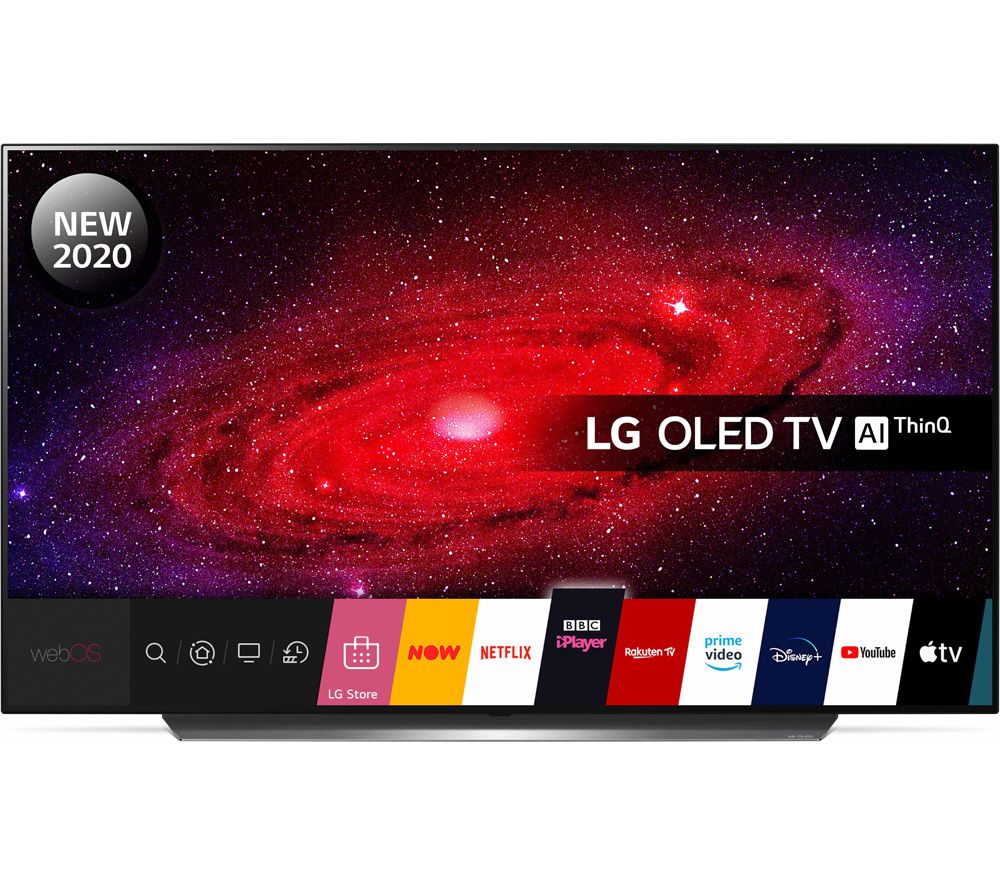LG OLED55CX6LA 55″ Smart 4K Ultra HD HDR OLED TV with Google Assistant & Amazon Alexa
a9 Gen 3 Processor for outstanding colour & contrast. Cinematic sound with Dolby Atmos. HDR: Dolby Vision IQ / HDR10 / Hybrid Log-Gamma (HLG). 4K streaming. Freeview HD / Freesat HD.
OLED TV
Discover just how good your entertainment can look with the LG OLED55CX6LA 55″ Smart 4K Ultra HD HDR OLED TV. Perfect blacks, intense colour, and infinite contrast – it’s a world away from a backlit LED TV.
And with HDR, you get deep, dark backgrounds and bold, bright colours for incredible contrast.
4K Ultra HD
You’d be forgiven for thinking everything you watch was filmed in 4K. LG’s advanced processor intelligently upscales lower resolution content to make the most of the stunning 4K display.
Dolby Atmos
You’ll feel like you’re at the heart of the action with multi-dimensional surround sound that seems to flow all around you.
Smart TV
With Google Assistant and Amazon Alexa voice control built-in, it’s never been easier to find what you want to watch, control your smart home, and get updates personal to you.
LG’s smart platform has plenty of choice to keep the whole family entertained. Settle down to the latest content from the likes of Disney+, Netflix, and Prime Video.
Additional information
| Screen size | 55" |
|---|---|
| Screen technology | OLED |
| Resolution | 4K Ultra HD 3840 x 2160p |
| HDR | – Dolby Vision |
| HDR technology | Dolby Vision IQ |
| Bezel width | 9.2 mm |
| Dynamic contrast ratio | Infinite |
| Picture enhancement | – Self-emitting Pixel Technology |
| 4K Ultra HD compatibility | – Video CODEC: HEVC H.265 / VP9 |
| Smart TV services | – Streaming: Netflix 4K, Amazon Prime Video 4K, Disney+, Apple TV, Rakuten TV, NOW TV Please note: Some services are only available in the UK. |



by Mike
Incredible picture quality.
by Praveen
picture quality, cinematic sound.
by Anthony
great picture.
by Cherrie
Good tele especially for next gen gaming.
by Sandra
Amazing picture, easy to set up.